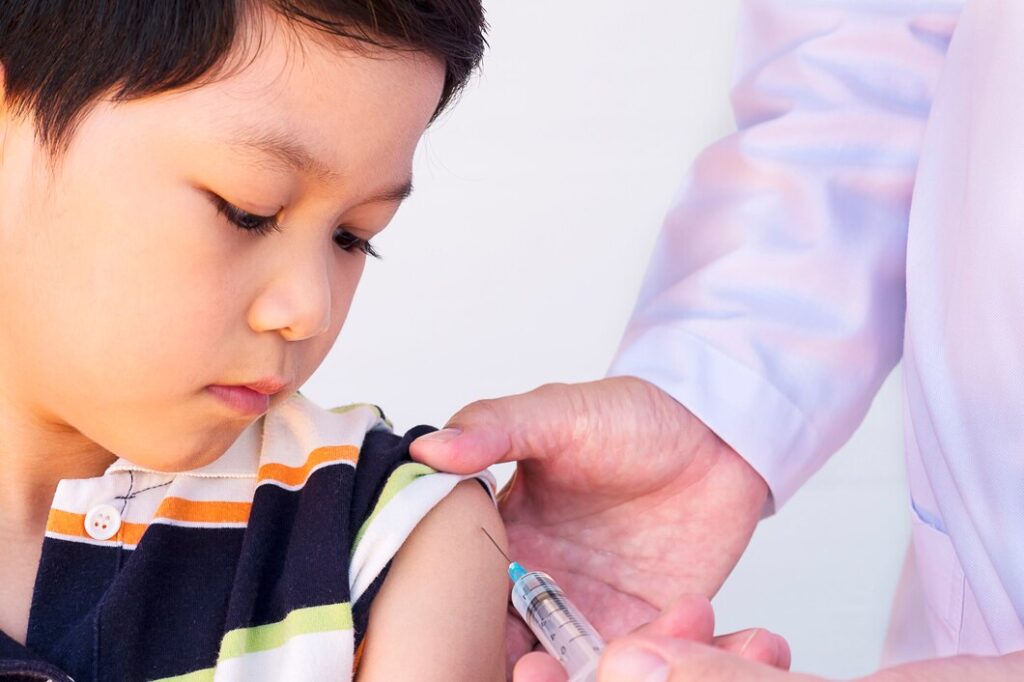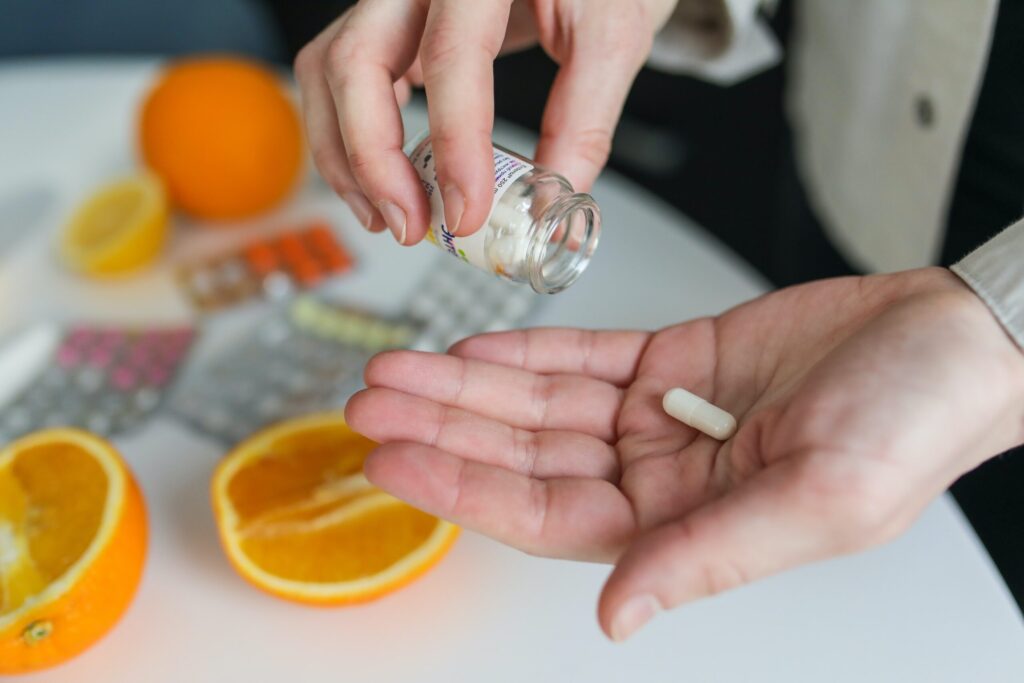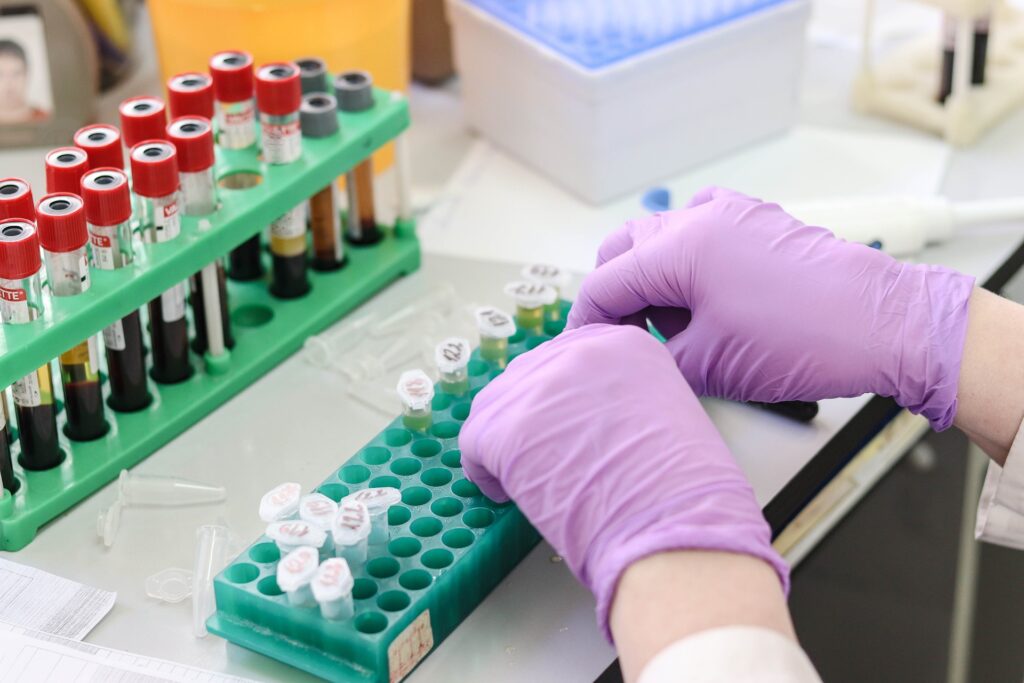Type 1 Diabetes Mellitus;
Overview:
Type 1 Diabetes Mellitus (DM) is a chronic condition characterized by the pancreas’s inability to produce insulin. Insulin is a hormone crucial for regulating blood sugar levels. Without it, glucose remains in the bloodstream, leading to elevated blood sugar levels, which can cause serious health complications.
What is Type 1 Diabetes Mellitus DM?
Type 1 DM, often referred to as juvenile diabetes, typically manifests in childhood or early adulthood. Unlike Type 2 DM, which is commonly linked to lifestyle factors, Type 1 DM is an autoimmune disease. In this condition, the body’s immune system mistakenly attacks and destroys the insulin-producing beta cells in the pancreas which makes insulin. This results in insulin deficiency and Type 1 DM.

Causes of Type 1 DM:
Type 1 Diabetes Mellitus (DM) is a complex disease with multifactorial origins. While the exact cause is still not sure, several factors contribute to its development.
The main thing is that, our body destroys beta cells in the pancreas by various autoimmune mechanisms like autoantibodies, T cell mediated destruction, etc. and ultimately leads to beta cell loss.
These beta cells are the ones which makes Insulin for us. That’s why in Type 1 DM, there is clear Insulin deficiency and which leads to poor sugar control and diabetes. Here’s a breakdown of various mechanisms that cause type 1 DM:
Genetic Predisposition
- Inherited Susceptibility: Individuals with specific genetic markers have a higher risk of developing Type 1 DM.
- Human Leukocyte Antigen (HLA) Complex: Certain variations in the HLA genes, particularly within the HLA-DQ and HLA-DR regions, are strongly associated with Type 1 DM.
Autoimmune Response
- Immune System Dysfunction: Type 1 DM is an autoimmune disease where the body’s immune system mistakenly attacks and destroys insulin-producing beta cells in the pancreas.
- Triggering Factors: Environmental triggers, such as viral infections or exposure to certain toxins, may initiate the autoimmune response in genetically predisposed individuals.
Environmental Factors
- Viral Infections: Several viruses, including enteroviruses and coxsackievirus, have been implicated in triggering the autoimmune response leading to Type 1 DM.
- Early Childhood Exposures: Exposures to certain environmental factors during infancy or early childhood may play a role in the development of Type 1 DM.
Immunological Factors
- T-cell Mediated Destruction: In Type 1 DM, T-cells, a type of immune cell, target and attack pancreatic beta cells, leading to their destruction.
- Autoantibodies: The presence of autoantibodies, such as islet cell antibodies (ICA), insulin autoantibodies (IAA), glutamic acid decarboxylase antibodies (GADA), and insulinoma-associated-2 autoantibodies (IA-2A), is often detected in individuals at risk of developing Type 1 DM.
Epigenetic Factors
- Gene Regulation: Epigenetic changes, such as DNA methylation and histone modifications, can influence gene expression patterns associated with Type 1 DM.
- Environmental Influence: Environmental factors, including diet, stress, and exposure to pollutants, can induce epigenetic modifications that may contribute to the development of Type 1 DM.
Interplay of Factors
- Complex Interaction: The development of Type 1 DM is the result of a complex interplay between genetic susceptibility, environmental triggers, and immunological responses.
- Individual Variability: The onset and progression of Type 1 DM can vary widely among individuals, highlighting the importance of personalized approaches to understanding and managing the disease.
Risk Factors:
Several risk factors increase the likelihood of developing Type 1 DM, including a family history of the condition, genetics, and certain viral infections such as enteroviruses and coxsackievirus.
Signs and Symptoms of Type 1 DM:
Type 1 Diabetes Mellitus (DM) manifests with distinct signs and symptoms that can vary in severity and onset. It’s important to recognize these symptoms for early diagnosis and better management. Let’s know few common symptoms:
Early Signs and Symptoms
- Increased Thirst (Polydipsia): Individuals with Type 1 DM often experience excessive thirst due to dehydration caused by high blood sugar levels.
- Frequent Urination (Polyuria): Excess glucose in the bloodstream leads to increased urine production, resulting in frequent trips to the restroom.
Metabolic Changes
- Unexplained Weight Loss: Despite increased hunger and food intake, individuals may experience unintentional weight loss due to the body’s inability to utilize glucose for energy.
- Extreme Hunger (Polyphagia): The body’s cells are deprived of glucose, prompting feelings of hunger and increased food consumption.
Neurological Symptoms
- Fatigue and Weakness: Insufficient glucose uptake by cells results in decreased energy levels, leading to fatigue and weakness.
- Irritability and Mood Changes: Fluctuations in blood sugar levels can affect mood stability, leading to irritability and mood swings.
Visual Disturbances
- Blurred Vision: High blood sugar levels can cause changes in the shape of the eye lens, leading to blurred vision and difficulty focusing.
Delayed Healing
- Slow Wound Healing: Poorly controlled diabetes can impair the body’s ability to heal wounds, leading to delayed healing and an increased risk of infections.
Acute Complications:
- Ketoacidosis: In severe cases of untreated Type 1 DM, the body may produce ketones as an alternative fuel source, leading to diabetic ketoacidosis (DKA), characterized by nausea, vomiting, abdominal pain, and fruity-scented breath.
- Hyperglycemia: Persistently high blood sugar levels can cause symptoms such as dry mouth, fruity-scented breath, and confusion.
Long-term Complications
- Cardiovascular Complications: Chronic hyperglycemia increases the risk of heart disease, stroke, and peripheral vascular disease.
- Nerve Damage (Neuropathy): Prolonged exposure to high blood sugar levels can damage nerves, leading to tingling, numbness, or pain, particularly in the hands and feet.
- Eye Damage (Retinopathy): Diabetes can damage the blood vessels in the retina, leading to vision problems and potentially blindness if left untreated.
Treatment of Type 1 DM:
The main basis of type 1 DM management is giving the patient Insulin on daily basis. These patients require lifelong Insulin injections. There are multiple Insulin regimens and preparations available today. From short acting regular insulin to long acting Glargin.
We must keep watch on signs and symptoms of Hypoglycemia (Low blood sugar) as this is the most common and most serious side Effect of Insulin. Let’s see treatment in detail:
Insulin Therapy in Type 1 DM:
- Multiple Daily Injections (MDI): Administering both basal (long-acting insulin) and bolus (rapid-acting insulin for meals) insulins multiple times a day.
- Continuous Subcutaneous Insulin Infusion (Insulin Pump): Providing continuous infusion of rapid-acting insulin through an insulin pump.
- Automated Insulin Delivery (Hybrid Closed Loop): Utilizing systems that automatically adjust insulin delivery based on glucose levels, associated with improved time in target range and reduced hypoglycemia risk.
What is Hypoglycemia (Low Blood Sugar) & How to manage it?
Patients on Insulin therapy are at high risk of developing Hypoglycemia. Hypocalcemia is nothing but critically low blood sugar (Glucose) levels. When blood glucose levels falls below 70 mg/dl, we call it as hypoglycemia. This can be very dangerous and can cause brain damage and even death.
Common signs and symptoms of Hypoglycemia:
- Diaphoresis (Excessive Sweating)
- Tachycardia (Rapid Heartbeat)
- Lightheadedness or Dizziness
- Confusion or Difficulty Concentrating
- Hunger or Increased Appetite
- Visual Changes, such as Blurred Vision
- Tremors or Shakiness
- Irritability or Mood Swings
- Fatigue or Weakness
- Headache
- Nausea
- Paleness of Skin
- Tingling or Numbness in Lips or Tongue
We must keep eye on these signs and symptoms. Follow these measures:
- Education: Educating individuals and their partners about hypoglycemia signs and symptoms.
- Glucose Administration: Administering 15 to 20g of glucose orally for blood glucose below 70 mg/dL, with rechecking glucose levels after 15 minutes and additional carbohydrate intake if needed.
- Glucagon: Prescribing glucagon for emergency use in cases of severe hypoglycemia.
Individualized Insulin Dosage
- Initial Total Daily Insulin Dose (TDD): Calculating TDD by multiplying the person’s weight in kilograms by 0.2 to 0.6 units.
- eg. If a boy with type 1 DM has a body weight of 40 Kgs. then his we will have to multiply 40× 0.2 or 40× 0.6 (Range) to get his total daily insulin dose.
- Basal and Bolus Requirements: Typically, basal insulin comprises 40% to 50% of TDD, with the rest covering mealtime insulin needs.
- Adjustments: Modifying insulin dosages based on factors such as diet, physical activity, and glucose monitoring results.
Mealtime Management
- Carbohydrate Counting: Teaching individuals carbohydrate counting and insulin-to-carbohydrate ratio for mealtime dosing.
- Correction Factor: Estimating the glucose reduction resulting from 1 unit of rapid-acting insulin for hyperglycemia correction.
- Dosing Caution: Avoiding insulin stacking to prevent overdosing and hypoglycemia.
Variability in Insulin Requirements
- Life Stage and Circumstances: Adapting insulin doses for puberty, pregnancy, steroid use, obesity, aerobic exercise, and the honeymoon period after diagnosis.
- Types of Insulin: Choosing from rapid-acting, short-acting, long-acting, and intermediate insulin formulations based on individual needs and preferences.
Additional Treatment Modalities
- Physical Activity: Incorporating exercise to improve insulin sensitivity, cardiovascular health, and overall well-being.
- Regular Medical Care: Undergoing annual eye and foot exams, managing cardiovascular risk factors, and considering transplantation options for those eligible.
Complications:
Type. 1 DM if not managed correctly by adequate insulin therapy, regular compliance and other lifestyle modifications can lead to complications. Acute or short onset complications are life threatening if not treated quickly. Let’s know in detail:
Short-term Complications:
- Hypoglycemia (Low Blood Sugar):
- Symptoms include sweating, shaking, dizziness, confusion, and weakness.
- Can lead to unconsciousness or seizures if untreated.
- Hyperglycemia (High Blood Sugar):
- Symptoms include increased thirst, frequent urination, fatigue, and blurred vision.
- Can progress to diabetic ketoacidosis (DKA) or hyperosmolar hyperglycemic state (HHS) if severe.
- Diabetic Ketoacidosis (DKA):
- Characterized by high blood sugar levels, ketones in urine, dehydration, and metabolic acidosis.
- Requires immediate medical attention and treatment with insulin and fluids.
- Hyperosmolar Hyperglycemic State (HHS):
- Occurs in type 2 diabetes with extremely high blood sugar levels and severe dehydration.
- Can lead to coma or death if untreated.
Long-term Complications:
- Cardiovascular Disease:
- Includes coronary artery disease, heart attack, stroke, and peripheral artery disease.
- Leading cause of death in people with diabetes.
- Kidney Damage (Nephropathy):
- Can lead to chronic kidney disease and end-stage renal disease (ESRD) requiring dialysis or transplant.
- Nerve Damage (Neuropathy):
- Peripheral neuropathy affects nerves in the extremities, causing pain, tingling, or numbness.
- Autonomic neuropathy affects nerves that control internal organs, leading to digestive, urinary, and sexual problems.
- Eye Damage (Retinopathy):
- Diabetic retinopathy damages blood vessels in the retina, leading to vision loss or blindness.
- Foot Complications:
- Diabetic foot ulcers, peripheral arterial disease, and neuropathy increase the risk of foot infections and amputations.
- Skin Conditions:
- Increased risk of bacterial and fungal infections, diabetic dermopathy, and necrobiosis lipoidica diabeticorum.
- Dental Problems:
- Increased risk of periodontal disease, tooth decay, and gingivitis.
- Mental Health Issues:
- Depression, anxiety, diabetes distress, and eating disorders are common among people with diabetes.
- Increased Risk of Infections:
- Higher susceptibility to skin infections, urinary tract infections, yeast infections, and respiratory infections.
- Bone and Joint Problems:
- Osteoporosis, osteoarthritis, and Charcot’s joint increase the risk of fractures and mobility issues.
- Increased Risk of Cancer:
- Higher risk of pancreatic cancer, liver cancer, colorectal cancer, and breast cancer among individuals with diabetes.
Managing diabetes effectively through lifestyle modifications, medication adherence, regular check-ups, and blood sugar control is important for preventing both short-term and long-term complications.
How to Prevent Type 1 Diabetes?
Currently, there are no known methods for preventing Type 1 DM since it is primarily an autoimmune condition. However, ongoing research aims to identify strategies for preventing or delaying its onset in individuals with a predisposition to the disease. Early detection through genetic screening may help identify those at risk and enable early intervention strategies.
Summary:
Type 1 Diabetes Mellitus is a chronic autoimmune condition that requires lifelong management. While there is no known cure, advancements in medical technology and research offer hope for improved treatments and preventive measures in the future.
What is type 1 diabetes caused by?
Type 1 diabetes is caused by an autoimmune reaction in which the body’s immune system mistakenly attacks and destroys the insulin-producing beta cells in the pancreas.
What is the difference between type 1 and type 2 diabetes?
Type 1 diabetes is an autoimmune condition where the pancreas produces little to no insulin, while type 2 diabetes is characterized by insulin resistance and relative insulin deficiency.
Can type 1 diabetes live normal life?
Yes, with proper management, individuals with type 1 diabetes can lead normal, fulfilling lives. However, it requires careful monitoring of blood sugar levels, insulin therapy, and lifestyle modifications.
Is type 1 diabetes curable?
Currently, there is no cure for type 1 diabetes. However, research into potential cures, such as beta cell transplantation and immunotherapy, is ongoing.
Can type 2 diabetes go away?
Type 2 diabetes can sometimes be managed or even reversed with lifestyle changes such as weight loss, healthy diet, and regular exercise. However, it is a chronic condition that may require ongoing management.
Can I marry a type 1 diabetes?
Yes, individuals with type 1 diabetes can lead fulfilling relationships and marry like anyone else. However, it’s important for partners to understand the condition and provide support in managing it.
Is type 1 or type 2 diabetes worse?
Both type 1 and type 2 diabetes can lead to serious complications if not managed properly. The severity of the condition depends on various factors, including individual health, lifestyle, and access to healthcare.
Which diabetes is genetic?
Both type 1 and type 2 diabetes have genetic components. Individuals with a family history of diabetes are at higher risk of developing the condition.
Which celebrities have type 1 diabetes?
Several celebrities, including Nick Jonas, Halle Berry, and Sonia Sotomayor, have publicly disclosed their diagnosis of type 1 diabetes.
At what age is type 1 diabetes diagnosed?
Type 1 diabetes is commonly diagnosed in childhood or early adulthood, but it can occur at any age.
How long can a diabetic live?
With proper management, individuals with diabetes can live long, healthy lives. Life expectancy depends on various factors, including blood sugar control, overall health, and access to medical care.
What foods should type 1 diabetics eat?
Type 1 diabetics should focus on a balanced diet rich in fruits, vegetables, whole grains, lean proteins, and healthy fats. Carbohydrate counting and portion control are essential for managing blood sugar levels.
Do type 2 diabetics take insulin?
Some individuals with type 2 diabetes may eventually require insulin therapy if oral medications and lifestyle changes are not sufficient to control blood sugar levels.
How to control type 1 diabetes without insulin?
Type 1 diabetes requires insulin therapy for management. However, lifestyle modifications such as healthy diet, regular exercise, and stress management can complement insulin treatment in controlling blood sugar levels.
What is HbA1c level for type 1 diabetes?
The target HbA1c level for type 1 diabetes is usually less than 7%, although individual targets may vary based on factors such as age, health status, and risk of hypoglycemia.
Can I reverse type 1 diabetes?
Currently, type 1 diabetes cannot be reversed. However, advances in medical research may offer potential cures or improved treatments in the future.
What is the best treatment for type 1 diabetes?
The best treatment for type 1 diabetes involves insulin therapy, blood sugar monitoring, healthy lifestyle choices, and regular medical care to prevent complications and maintain optimal health.
What are the signs of diabetes type 1?
Signs of type 1 diabetes include increased thirst, frequent urination, unexplained weight loss, fatigue, blurred vision, and slow wound healing.
How to test for type 1 diabetes at home?
Home testing kits for diabetes typically measure blood sugar levels using a glucometer. However, diagnosing type 1 diabetes requires medical evaluation and laboratory tests to assess blood sugar levels and other indicators.
How long can a type 1 diabetic survive without insulin?
Without insulin, individuals with type 1 diabetes cannot survive for more than a few days or weeks, as insulin is necessary for regulating blood sugar levels and sustaining life.
Read more:

